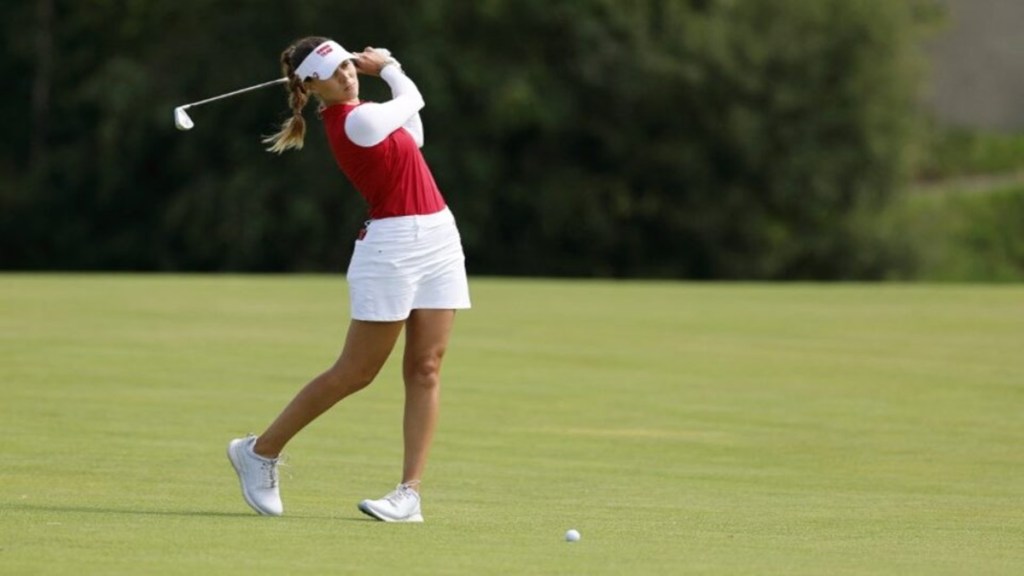“How stupid, I am,” Roberto Di Vincenzo told the press after he signed an incorrect scorecard that cost him a chance to win the 1968 Masters Tournament. “This isn’t a funeral you know…It’s a great disappointment, and it tears at my gut…but it was not to be,” said 59-year-old Tom Watson to lighten the mood after he came up just short of winning the 2009 Open Championship. Phil Mickelson was clearly out of sorts after giving away a two-shot lead with three to play at the 2006 US Open: “I’m still in shock that I did that. I’m such an idiot,” he said wryly. Jean Van De Velde was even more introspective, squandering a three shot lead on the final hole of the 1999 Open Championship.
”I wouldn’t say I wasn’t focused…I think I wasn’t humble enough,” he said. No one could accuse Rocco Mediate of not being humble after he summoned the courage to spend over an hour with the press, dissecting his 18-hole playoff loss at the 2008 US Open to Tiger Woods. Stuff like this is golf lore: moments of courage and inner strength in the face of devastating loss; to be able to lay themselves bare at their most vulnerable moments without fear of undermining their confidence. Victories are the obvious yardstick, but often, it’s how players deal with, and conduct themselves in the face of their biggest failures, that comes to define them.
It was appropriate that a discussion about pro golfers’ obligations to fans and the press should have come into circulation at the PGA Tour’s Arnold Palmer Invitational earlier this month. You see, Palmer’s graciousness with fans and the press remains pro golf’s model for public relations. He set the example and players like Jack Nicklaus and Tom Watson followed suit. The long-standing goodwill and popularity of the PGA Tour with fans and sponsors is often attributed to the brand these three players, and their cohorts, built during the Tour’s early years.
So, when Collin Morikawa refused to speak with the press after at the 2025 Arnold Palmer Invitational last week, he couldn’t have picked a worse place and time to play truant. Morikawa, understandably upset at not being able to convert a three-shot lead going into the final round lost by a stroke to Russel Henley. If that wasn’t enough, his blunt clarification at this week’s Players Championship, where he told the press, that “I don’t owe anyone anything, no offence to you guys,” added fuel to the fire. Commentators across the board have wasted no time in reminding Morikawa that most of the money he makes on the PGA Tour comes from media and broadcast rights.
So he certainly has commitments to the Tour, the broadcasters and the sponsors. And as fans, the ultimate consumers who buttress this entire exercise, we do want to know how players feel about failures. Getting your teeth knocked out by golf is a story we can all relate to, and to see these players pick themselves up again, and again, is fascinating stuff. These human stories are at the heart of golf’s appeal. I mean just watch the latest season of Netflix’s ‘Full Swing,’ and the stories that are showcased.
More than anything, as far as the PGA Tour is concerned, this is bad timing: in the wake of the power struggle with LIV Golf, the Tour has been attempting to build bridges with fans and sponsors, not burn them. And to have so much media distracted away from its flagship event—the ongoing Players’ Championship is hardly desirable. So let’s get back to the event at hand: with $ 25 million in the kitty, the Players Championship still has (LIV events included) the biggest purse of any event in golf played at the same top-notch venue—TPC Sawgrass—every year. Until LIV came around, The Players also had the strongest field in the game. I’m not going to criticise the Tour for not inviting the LIV players to augment the field: while there’s no question that doing so would have sent a clear message that it’s committed to resolving things with LIV, it’s likely to have further incensed players who’ve stayed in the PGA Tour’s fold.
That notwithstanding, it’s still a top-notch field. More than anything else, to win the Players, you need self-belief. Hal Sutton, the 1983 champion was feeling pretty good about his game when he teed it up at TPC Sawgrass in 2000. Tiger fever was in full swing then and Colin Montgomerie famously remarked that “we’re all playing for second.” As it turned out, Sutton led from the start that year. And every post-round presser was dominated by questions on how he was planning to keep Tiger at bay. “Let me tell you, when I get down on my knees to pray, I don’t pray to Tiger,” remarked an exasperated Sutton. He later clarified that he didn’t want to build up Tiger in his mind so much that it crippled him.
If I was to conjure up a story for the next season of ‘Full Swing,’ it would be Morikawa’s loss at the Arnold Palmer Invitational, the ensuing outrage over his comments, and then a comeback win at the Players Championship. What sort of triumph would it be if it didn’t have its share of travails? By the time you read this, it’s probably clear who’s in the hunt and who’s out. If Scheffler’s in the lead, then players need to internalise what Sutton said in 2000. May the best player win.
Meraj Shah is a seasoned golf writer and video producer

